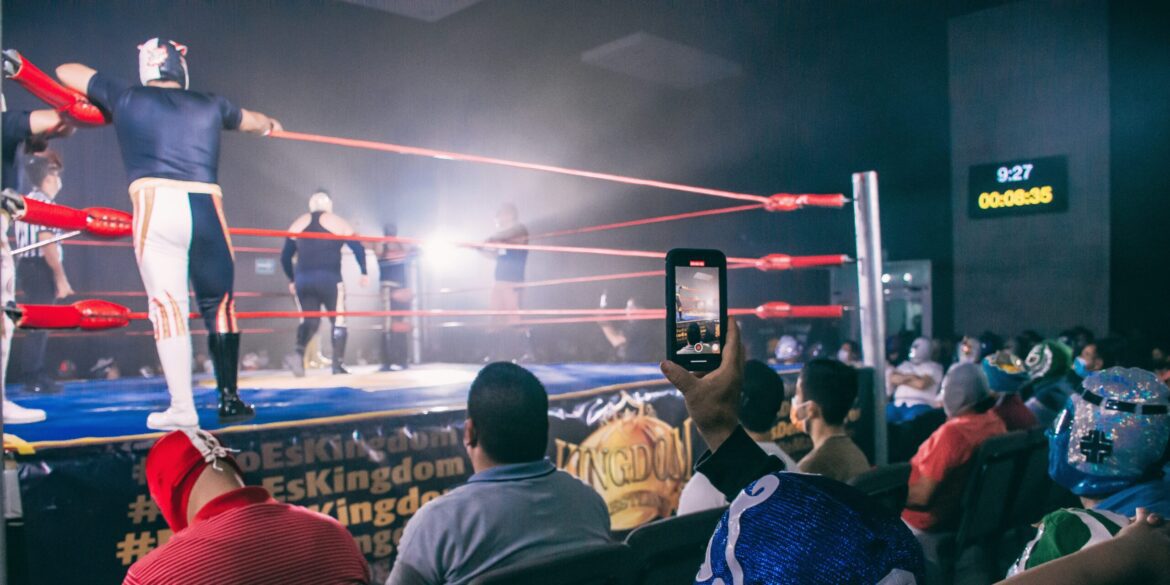Salt Lake City — The wrestling world recently turned its attention to Utah as Saturday Night’s Main Event delivered one of its most memorable spectacles in recent history. Held at the Delta Center in Salt Lake City, the event featured not one, but two world-championship matches—signaling a major milestone for the iconic television special and reflecting WWE’s evolving strategy for high-profile programming.
This iteration of Saturday Night’s Main Event proved that championship-level drama is no longer confined to traditional pay-per-view events or the newer premium live event format. Instead, it unfolded live on television and streaming platforms, giving fans across the country a front-row seat to two high-stakes contests with real implications for the company’s top titles. It was a bold experiment in reshaping the fan experience, and by all accounts, it paid off with a compelling mix of storylines, athleticism, and spectacle.
The main draw of the night was the vacant World Heavyweight Championship bout between CM Punk and Jey Uso. This match became necessary after former champion Seth Rollins was forced to vacate the title due to a serious shoulder injury. The company quickly pivoted to fill the void, turning to two of its most dynamic and popular stars to fight for the honor. CM Punk, returning to WWE with renewed focus and intensity, found himself up against Jey Uso, whose rise from tag team standout to singles competitor has been one of the most compelling narratives of the past year.
The match itself lived up to expectations. Both competitors brought their unique styles and emotional storytelling into the ring. Punk, a veteran known for his tactical mindset and striking ability, was pitted against Uso’s unrelenting energy and deeply personal motivation. The stakes could not have been higher, and the crowd responded accordingly, erupting with anticipation and drama at every turn. In the end, it was CM Punk who emerged victorious, reclaiming championship glory and solidifying his return as more than just a comeback story.
Equally dramatic was the Undisputed WWE Championship match, where Cody Rhodes defended his title against Drew McIntyre. This clash of titans was not originally part of the card but was added weeks before the event, fueling speculation that WWE intended to make this Saturday Night’s Main Event one of the most memorable editions in its modern run. Rhodes, who has carried the title with a sense of legacy and respect since WrestleMania, faced McIntyre, a powerful and seasoned challenger with unfinished business and a chip on his shoulder.
Their encounter was as physical as it was psychological, with both men digging deep into their arsenals to outmaneuver and overpower each other. McIntyre dominated stretches of the match, using his strength and size advantage, but Rhodes managed to survive the onslaught. The conclusion was controversial, with interference playing a role in Rhodes retaining the championship—a finish that sparked strong reactions from both the live audience and the broader wrestling community. Whether fans viewed the outcome as a clever continuation of ongoing storylines or an unjust result, the buzz it created was undeniable.
What made this night particularly significant wasn’t just the championship matches themselves but the larger implications for professional wrestling’s presentation model. Saturday Night’s Main Event, once a staple of 1980s and 1990s weekend television, had experienced a subdued revival in recent years. But this event demonstrated that WWE sees the format as more than nostalgic programming—it’s now a platform to make real narrative moves and deliver marquee attractions. By placing two top-tier title matches on a non-pay-per-view card, WWE challenged industry conventions and signaled a willingness to innovate.
Salt Lake City’s selection as the host city also underscores the WWE’s continued efforts to expand into markets that have traditionally seen fewer live events. The Delta Center was packed with fans from across the region, proving that there is a strong appetite for live wrestling entertainment beyond the usual coastal strongholds. The energy from the crowd helped elevate the matches and contributed to the perception that the event was something special.
In terms of broader cultural significance, the event reaffirms professional wrestling’s ongoing relevance in the American entertainment landscape. At a time when scripted television faces labor disruptions and sports are increasingly fragmented across streaming services, wrestling offers a hybrid of athleticism, storytelling, and immediacy that continues to resonate with audiences. Saturday Night’s Main Event served as a reminder that, when executed with care and creativity, wrestling can generate moments that matter—ones that are debated, replayed, and remembered.
As WWE reflects on the success of the event, questions now turn to the future. Will more major title matches be showcased on free-to-air or streaming specials? Can the format maintain its appeal without diluting the prestige of pay-per-view? And how will rival promotions respond, if at all, to WWE’s evolving distribution and booking strategies?
What is clear is that November 1 in Salt Lake City wasn’t just another stop on the wrestling calendar. It was a turning point for WWE’s television strategy and a powerful reminder of why professional wrestling, when done right, can still command attention on the biggest stages—whether in an arena, on a television screen, or through the voices of fans around the world.

